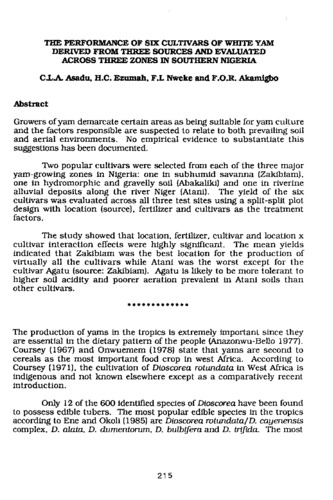The performance of six cultivars of white yam derived from three sources and evaluated across three zones in southern Nigeria
Abstract
Growers of yam demarcate certain areas as being suitable for yam culture and the factors responsible are suspected to relate to both prevailing soil and aerial environments. No empirical evidence to substantiate this suggestions has been documented. Two popular cultivars were selected from each of the three major yam-growing zones in Nigeria: one in sub humid savanna (Zakibiam), one in hydromorphic and gravelly soil (Abakaliki) and one in riverine alluvial deposits along the river Niger (Atan1). The yield of the six cultivars was evaluated across all three test sites using a split -split plot design with location (source), fertilizer and cultivars as the treatment factors. The study showed that location, fertilizer, cultivar and location x cultivar interaction effects were highly Significant. The mean yields indicated that Zakibiam was the best location for the production of virtually all the cultivars while Atani was the worst except for the cultivar Agatu (source: Zakibiam). Agatu is likely to be more tolerant to higher soil acidity and poorer aeration prevalent in Atani soils than other cultivars.

